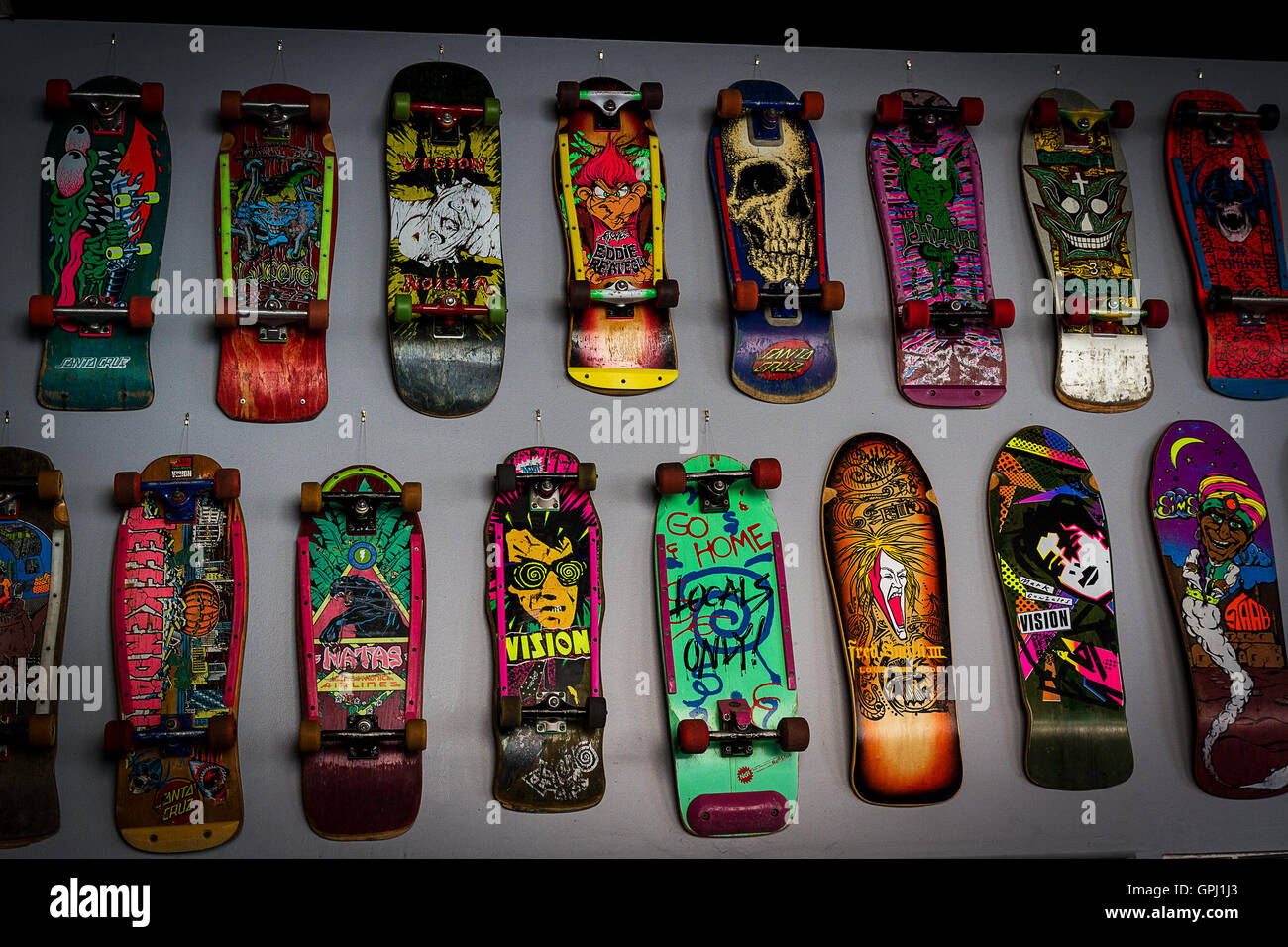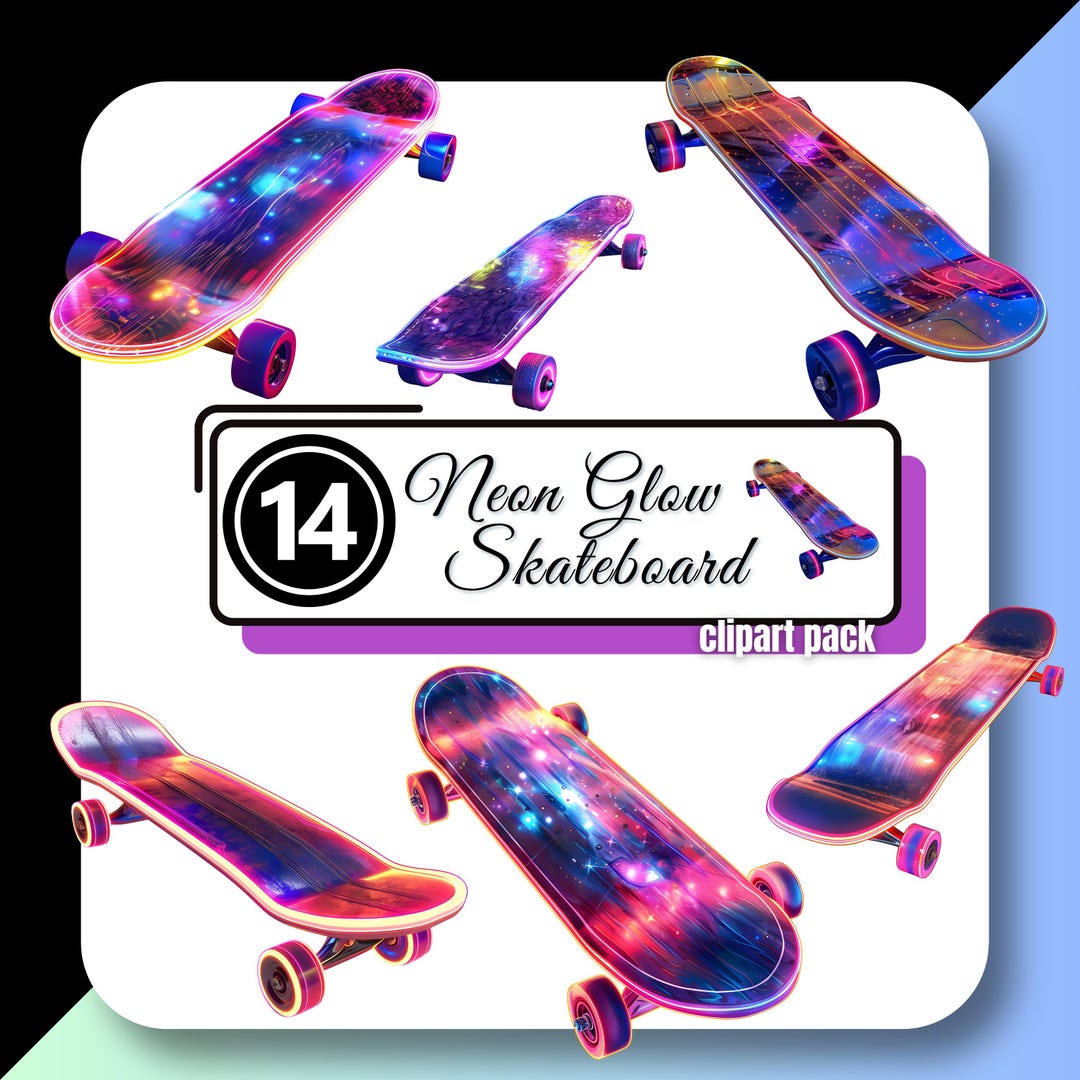You know, something crazy happened last week at my Berlin studio. This 22-year-old skater walked in asking specifically for "that neon 80s vibe" on a custom skateboard deck. I had to laugh because... actually, when I was his age, those graphics were considered totally outdated. But here we are in 2025, and suddenly everyone's going nuts for Day-Glo colors and geometric patterns that defined skateboard culture 40 years ago.
It's fascinating how culture moves in cycles. After spending years working with classical Renaissance art at DeckArts, I'm now seeing this incredible demand for retro skateboard graphics. And the kids asking for them weren't even born when these designs were first popular! There's something really beautiful about that.
The Nostalgia Wave That Nobody Saw Coming
Here's what's really interesting - this isn't just a simple trend revival. When I organized art events for Red Bull Ukraine back in the day, we always talked about how nostalgia works in 20-year cycles. Fashion, music, visual culture... it all comes back eventually.
But with skateboard graphics, it's different. These 80s and 90s designs aren't just coming back - they're being reinterpreted by a generation that understands both the original context and contemporary aesthetics. I wrote about similar cultural patterns in my The Psychology of Street Art: Why Skateboard Culture Resonates in Modern Homes article, exploring how street culture satisfies deep psychological needs.
What's driving this revival? From what I'm seeing in Berlin's creative scene, it's partly Instagram aesthetics, partly genuine appreciation for bold graphic design, and partly this hunger for authenticity in an increasingly digital world.

Why 80s & 90s Graphics Hit Different Now
So here's my theory, and it comes from working with both Ukrainian streetwear brands and Berlin's contemporary art scene. The 80s and 90s were the golden age of skateboard graphics because artists had total creative freedom. No Instagram algorithms to please, no focus groups, no corporate sanitization. Just pure, unfiltered creative expression.
Think about those iconic Powell Peralta skulls, the Santa Cruz screaming hand, Vision's neon psychedelia... these weren't just graphics. They were statements. They said "we don't fit into your neat little boxes." And that message? It's exactly what Gen Z and young millennials are craving right now.
When I look at our Caravaggio Medusa Skateboard Wall Art, I see a similar rebellious energy. Caravaggio was the punk rock artist of his time, breaking all the rules. There's this this thread connecting classical rebellious art to 80s skateboard culture to what we're doing now.
Actually, the Powell Peralta company still exists and they're seeing crazy demand for their vintage reproductions. Shows you how timeless good design really is.
The Technical Magic Behind Retro Graphics
From a design standpoint, what made 80s and 90s skateboard graphics so powerful was the constraint-driven creativity. Limited color palettes (thanks to printing technology), bold contrasts, simple but effective compositions. These limitations forced artists to be incredibly inventive.
Now, with modern printing capabilities, we can recreate those aesthetics with much higher quality while maintaining the original spirit. It's like having the best of both worlds - authentic design language with contemporary craftsmanship.
I explored this balance between vintage aesthetics and modern quality in my Skateboard Art Maintenance: Preserving Your Investment Over Time guide, which covers how to properly care for both vintage and vintage-inspired pieces.
The Brands That Defined an Era (And Why They Still Matter)
Let me tell you about the legendary companies that created these iconic graphics. Powell Peralta with their Gothic horror aesthetic, Santa Cruz with their punk rock attitude, Vision with their day-glo experimentation. These weren't just skateboard companies - they were cultural movements.
Working in graphic design, I have massive respect for artists like Vernon Courtlandt Johnson (Powell Peralta), Jim Phillips (Santa Cruz), and Mark Gonzales (who revolutionized skateboard art in the late 80s). These guys understood something crucial: skateboard graphics aren't just decoration. They're tribal identity markers.

And that's exactly why they're having such a moment now. In our hyperconnected but somehow disconnected world, people are desperate for genuine community markers. These retro graphics provide instant tribal recognition - you see someone with a classic Santa Cruz logo, you immediately know something about their taste, their values, their aesthetic sensibility.
The Color Psychology of Neon
Here's something fascinating I've noticed working with color in both classical art reproduction and contemporary design - those electric 80s colors (hot pink, acid green, electric blue) create incredibly strong emotional responses. They're literally designed to grab attention and hold it.
These colors represent optimism, energy, rebellion against conformity. In the context of 2025, when everyone's dealing with economic uncertainty and social media fatigue, these bold, confident colors offer a kind of visual escape.
The modern revival isn't just copying these colors - it's understanding why they worked and adapting them for contemporary contexts. Whether you're creating custom skateboard wall art or choosing pieces for your collection... I wanted to mention the Thrasher Magazine archive, which has amazing examples of original 80s graphics.
How Modern Collectors Are Approaching Retro Graphics
What I'm seeing in Berlin's collector scene is really sophisticated. People aren't just buying random 80s-style graphics. They're being strategic about it. Some focus on original vintage pieces (which are getting incredibly expensive), others prefer high-quality reproductions that capture the aesthetic without the fragility of 40-year-old wood and ink.
The smart collectors understand that this revival creates unique opportunities. Original boards from legendary 80s and 90s companies are becoming serious investments. But there's also value in well-executed contemporary pieces that channel that energy for modern homes.
Our Bosch Garden of Earthly Delights Skateboard Deck Triptych actually uses some 80s-inspired color techniques to make a 500-year-old painting feel contemporary. It's this kind of cross-temporal dialogue that makes current skateboard art so exciting.
The Instagram Effect (And Why It's Not All Bad)
Look, I'm not naive about social media's role in this revival. Instagram's visual culture definitely favors bold, high-contrast imagery that pops on small screens. Neon 80s graphics are Instagram gold - they photograph beautifully, they're instantly recognizable, they scream "aesthetic."
But you know what? That's not necessarily a bad thing. Instagram is introducing these graphics to people who might never have encountered them otherwise. I've had clients discover legendary skateboard artists through social media, then dive deep into the history and culture behind the images.
The key is understanding the difference between Instagram-optimized reproductions and pieces with genuine cultural depth. Both have their place, but as someone building a serious collection or designing their space, you want to choose pieces that work both online and in real life.

Where This Revival Is Heading (My Berlin Perspective)
Living in Berlin gives you this unique vantage point on cultural movements. This city has always been about taking old ideas and making them new again. And what I'm seeing with retro skateboard graphics follows that pattern perfectly.
The revival isn't just about copying old designs. It's about understanding what made them powerful and translating that energy for a new generation. I'm seeing artists combine 80s color palettes with contemporary compositional techniques, blend vintage typography with modern printing methods, create pieces that honor the past while pushing into new territory.
This cultural cross-pollination is something I explored in The Underground Art Movement That Inspired DeckArts, where I break down how Berlin's art scene influences contemporary skateboard culture.
The most interesting development? Young collectors who are buying both vintage pieces and contemporary interpretations. They understand that culture isn't linear - it's this beautiful, chaotic conversation across decades and artistic movements.
Practical Tips for Retro Skateboard Art Collectors
If you're thinking about diving into this revival, here's what I'd recommend based on my experience in both the art world and skateboard culture:
Start with understanding the original context. Don't just buy something because it looks cool on Instagram. Learn about the artists, the companies, the cultural movements that created these graphics. That knowledge will guide better collecting decisions and help you appreciate what you own.
Consider both originals and quality reproductions. Vintage pieces are investments, but they're also fragile and expensive. High-quality modern reproductions let you enjoy the aesthetic without the anxiety of owning a piece of skateboard history.
Think about display carefully. These graphics were designed to be seen in motion, on the street, in skate shops. When you're mounting them as wall art, consider lighting, spacing, and context. A single neon graphic might look garish, but grouped with complementary pieces, it can be stunning.
The Future of Retro Revival
So from where I sit (actually, I'm standing at my standing desk right now), this 80s/90s revival feels different from typical nostalgia cycles. It's not just about looking backward - it's about taking the bold, uncompromising creative spirit of that era and applying it to contemporary challenges.
Our Botticelli's Birth of Venus Skateboard Wall Art represents a similar approach - taking something timeless and presenting it in a format that speaks to modern sensibilities. The same principle applies to retro skateboard graphics.
The revival will evolve, obviously. Trends always do. But I think the core appeal - bold graphics, authentic expression, tribal identity - those needs aren't going anywhere. Which means there will always be room for well-executed pieces that capture that 80s and 90s energy.
The question isn't whether this revival will last. It's whether you'll participate while it's still building momentum, before everyone catches on and prices go through the roof. Because trust me, having lived through multiple culture cycles... that's exactly what's coming next.
About the Author
Stanislav Arnautov is the founder of DeckArts and a creative director originally from Ukraine, now based in Berlin. With extensive experience in branding, merchandise design, and vector graphics, Stanislav has worked with Ukrainian streetwear brands and organized art events for Red Bull Ukraine. His unique expertise combines classical art knowledge with modern design sensibilities, creating museum-quality skateboard art that bridges Renaissance masterpieces with contemporary culture. Follow him on Instagram, visit his personal website stasarnautov.com, or check out DeckArts on Instagram and explore the curated collection at DeckArts.com.

